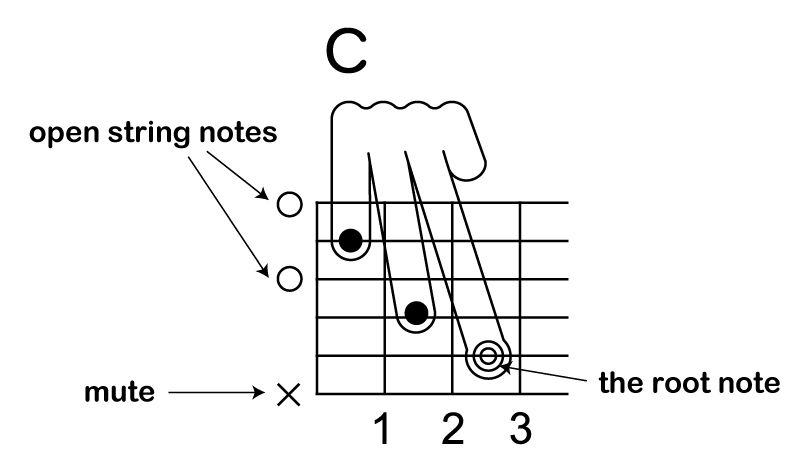|


On the chord form for high chords, Double circle shows the root note.
Find the chord you want to know and the note of its chord name from
the fingerboard chart.
If you overlap the position of the note and the position of the Double circle ,
it gives you the chord form.
* The root note is the note that the chord name is based on.
When you want to know the G major chord form
Let's try holding a G (major) chord.
Use the form below from the major chord group.

When you overlap the root note (G in this case) with the "Double circle",
The 3rd fret of the 6th string matches.


Now you have made a G major chord with the G on the 3rd fret
of the 6th string as the root note.
Choose the form that is easiest to play, or your favorite sound
from the several variations of forms for each chord.
Low Chords
The chord form for the low chords can be used as seen.
X shows notes to mute and not play, and circle shows open string notes
(do not press on the strings).

In general, the root note of the chord forms are the note of the
lowest string that is played.
Using a Capotasto
The capo is a tool that you can use to hold all six strings instead
of your forefinger or a nut.
If you fit the capo and play the chords from the low chord chart,
you can play chords with different root notes.

|